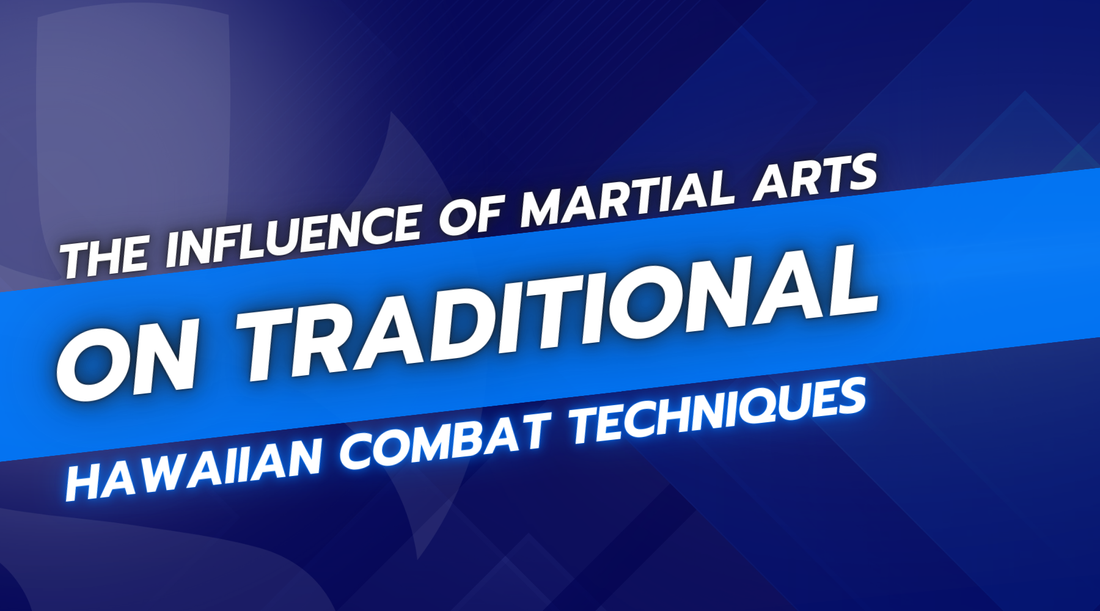
The Influence of Martial Arts on Traditional Hawaiian Combat Techniques
Share
Traditional Hawaiian combat techniques, rich in history and cultural significance, have evolved significantly over centuries. The ancient art of Lua, the primary form of Hawaiian martial arts, has seen substantial transformation, especially with the influence of various global martial arts. This article delves into the intricate blend of traditional Hawaiian combat methods and foreign martial arts, exploring how these influences have shaped contemporary practices.
The Roots of Traditional Hawaiian Combat Techniques
Lua, the ancient Hawaiian martial art, was an integral part of Hawaiian society, deeply rooted in their culture and warfare strategies. Lua encompassed a variety of techniques, including bone-breaking, joint locks, and throws, making it a comprehensive system of combat. It wasn't just a physical practice but also a spiritual one, intertwined with the warrior's mana (spiritual energy) and the natural elements.
The Arrival of Foreign Influences in Hawaii
The arrival of explorers and traders in Hawaii brought significant cultural exchanges. These encounters introduced new combat styles to the islands, gradually integrating into the Hawaiian way of life. European sailors, Asian immigrants, and American missionaries all contributed to this melting pot of martial techniques, each bringing their unique fighting styles and philosophies.
Integration of Martial Arts into Hawaiian Combat Techniques
The integration of various martial arts into traditional Hawaiian combat was a gradual process. Japanese martial arts like Judo, Karate, and Kendo had a profound influence, especially during the early 20th century when Japanese immigrants settled in Hawaii. Techniques from Chinese martial arts, such as Kung Fu and Tai Chi, also blended seamlessly with Lua, enhancing its effectiveness and versatility.
The Evolution of Lua Through Martial Arts
As foreign martial arts merged with Lua, the techniques and training methods evolved. Modern Lua incorporates principles from Judo's grappling, Karate's striking, and Tai Chi's fluid movements. This fusion has led to the development of hybrid combat styles that are both traditional and contemporary, maintaining the essence of Lua while adapting to modern needs.
Notable Figures in the Fusion of Hawaiian and Martial Arts
Several key figures have played pivotal roles in blending Hawaiian and foreign martial arts. Prominent martial arts masters in Hawaii, such as Sensei Thomas Young and Professor Sig Kufferath, have been instrumental in teaching and promoting hybrid techniques. Their contributions have ensured that both traditional Lua and its modern adaptations continue to thrive.
Cultural Significance of Martial Arts in Hawaii
Martial arts in Hawaii are more than just physical disciplines; they are cultural treasures. They play a crucial role in preserving Hawaiian heritage, often featured in festivals and cultural events. Ceremonial practices and competitive tournaments provide platforms for showcasing these art forms, ensuring their continued relevance and appreciation.
Martial Arts Schools and Dojos in Hawaii
Hawaii is home to numerous martial arts schools and dojos that emphasize both traditional Hawaiian combat techniques and their modern counterparts. These institutions offer comprehensive training programs, fostering a sense of community and cultural pride. Many schools actively engage in outreach programs, introducing martial arts to younger generations and the broader community.
Modern-Day Applications of Traditional and Hybrid Techniques
Today, the applications of traditional and hybrid Hawaiian combat techniques are diverse. They serve as effective self-defense methods, promote fitness and wellness, and offer recreational and professional opportunities in sports. Martial arts have become a vital part of Hawaii's lifestyle, embodying both tradition and innovation.
Challenges and Preservation Efforts
Despite their rich history, traditional Hawaiian combat techniques face challenges in maintaining authenticity. Globalization and modernization pose threats to these ancient practices. However, dedicated practitioners and organizations are working tirelessly to preserve Lua and its hybrid forms. Efforts include documenting techniques, conducting workshops, and promoting cultural awareness.
Final Thoughts
The influence of martial arts on traditional Hawaiian combat techniques is profound and enduring. The fusion of Lua with various global martial arts has resulted in a unique blend that honors its roots while embracing new ideas. This evolution reflects the resilience and adaptability of Hawaiian culture, ensuring that these combat techniques remain relevant and respected in the modern world
